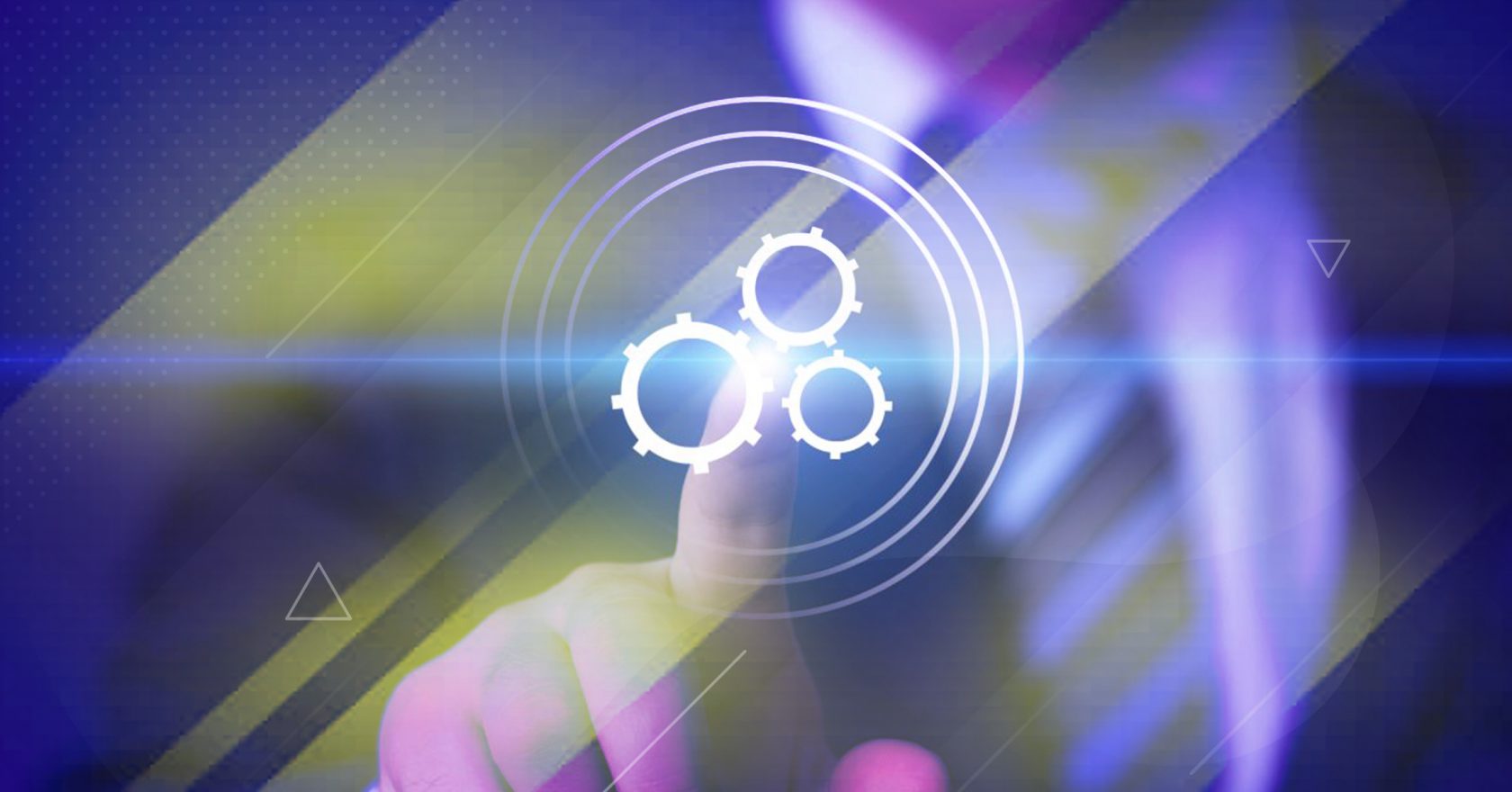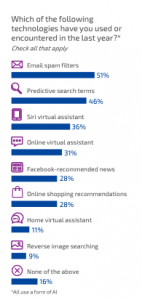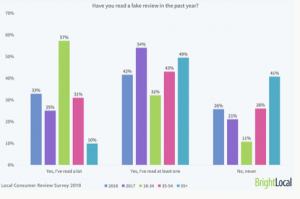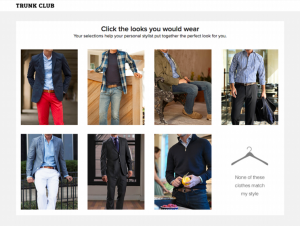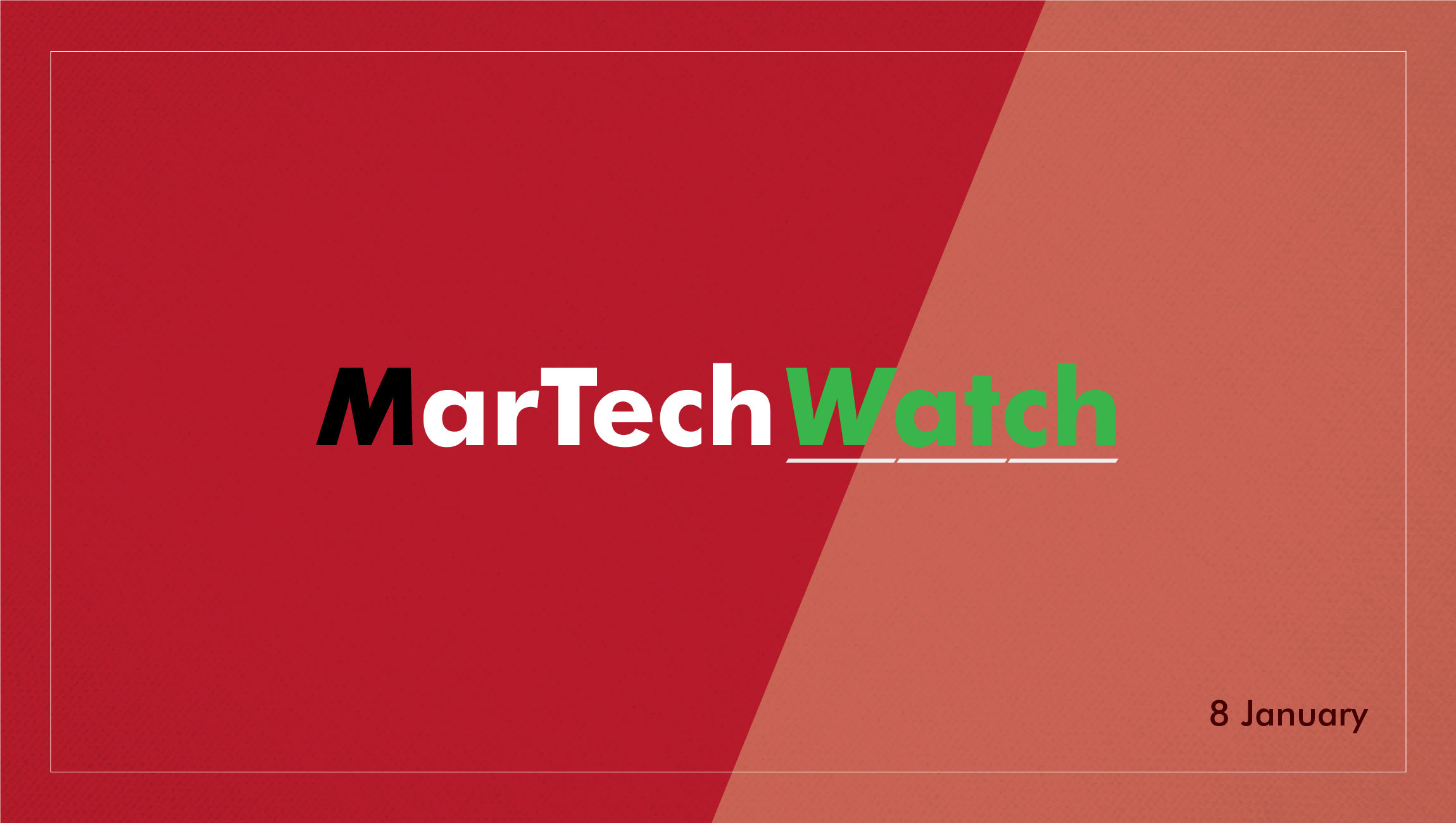When it comes to emerging technology, most consumers are often quite fearful of this kind of change. Many are concerned that automation will eliminate thousands of jobs in the near future. Others fear that their private data can be bought and sold, putting them in danger or removing any sense of privacy from the internet.
A great deal of consumers are also incredibly skeptical of Machine Learning, Big Data, and Artificial Intelligence specifically. Only 35% of customers state that they are comfortable interacting with businesses that utilize AI – even though 84% of us use AI-based devices and services frequently, such as Siri and Google Home.
However, when it comes to Marketing Technology, many recent innovations are placing the power back in the customers’ hands – not the other way around. And it is not just because technology is increasing convenience; MarTech is making the consumer more powerful than ever before – and businesses need to understand why and what this means for their strategies.
Let’s discuss.
Read More: How to Use Data to Drive Customer Propensity
Removing False Reviews
Customer reviews are an important and influential type of content over consumer behavior, but many customers are aware of the fact that businesses will publish fake reviews to improve their ratings. In fact, one study found that 89% of consumers spotted fake online reviews in 2018.
However, thanks to AI technology, this number has been steadily decreasing – making the internet a little bit more trustworthy for consumers. MarTech like Natural Language Processing and AI-powered review systems are able to spot spam reviews and also prevent companies from publishing their own fake assessments. This allows customers to get a more accurate depiction of the business before they buy – and it can help companies, too.
For example, Laguna Pearl partnered with Trustpilot to screen fraudulent reviews and provide customers with trustworthy ratings. The online jewelry retailer also published these verified reviews directly onto their product pages, which resulted in a 9.5% decrease in cart abandonment.
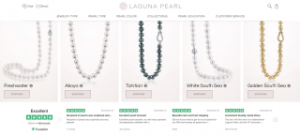
Marketers for Laguna Pearl cite this as a direct result from using these reviews because it made customers more trusting when it came to purchasing items – like luxury goods online. These type of review systems give customers even more power because they are able to rely on the opinion of other consumers (whom they consider trustworthy) rather than just blindly believing what a business says about themselves.
Incredible Personalization for All Experiences
Personalization has gone beyond just a name in the email subject line. 80% of marketers are now using AI for hyper-personalization in some capacity, such as product recommendations, special promotions, and, most commonly, hyper-targeted advertising.
Personalization is important to consumers, too. 90% of customers said that personalization appealed to them, and 80% were more likely to buy from a company that offered a tailored experience. This level of hyper-personalization puts customers in the driver’s seat of the CX because they are finally able to tell businesses exactly what they want.
For instance, businesses like Stitch Fix and Trunk Club created custom curated clothing shipments based on each customer’s preferences and style. Customers then choose which pieces they like, which means that their next order will be even more personalized.
Some brands are also allowing consumers to take control over the type of data that is shared for these personalized experiences – like Cutter & Buck does with their opt-out message on their home page. This again gives consumers the power to control what type of personalization they receive by sharing only as much data as they prefer.

Control Over Customer Service
One major shift in customer service is towards self-help rather than human assistance. 67% of customers stated that they preferred to use self-service online over speaking to a representative, and 40% only reached out when it was their last resort for an issue. Services like chatbots are becoming far more commonplace in the e-commerce space, which allows consumers to reach out easily for assistance – without having to wait around for a response.
This is far more convenient for customers, but it also gives businesses yet another opportunity to personalize the experience with Salesbots who “learn” the customer’s behavior and preferences, then sends product recommendations during the interactions.
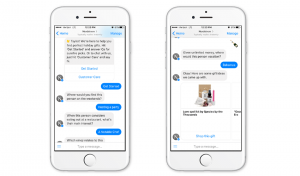
The days of waiting for hours on hold for the next available representative are gone. Technology now allows customers to have multiple options when reaching out to customer service, so they are able to receive assistance in whatever method is most convenient for them.
Read More: How to Engage and Connect With Your Online Audience in 2020
Interactions with IoT
IoT has exploded in popularity among consumers over the past few years as more customers are purchasing wearable devices – like smartwatches or installing Virtual Assistants like Alexa into their homes. This once again gives consumers the power to tell businesses how to best customize the CX based on concrete data about their behavior and preferences. IoT allows brands to truly learn more about each customer based on their behavior, such as the music they listen to, the movies/shows they like, and what products they purchase.
For example, FitBit used customer data that was gathered from their wearable devices to personalize ads that customers saw based on health data – like their activity levels, workout preferences, and even their sleep quality.
While the company did receive some backlash for privacy violations, it offers us a glimpse into the future of hyper-personalization through IoT.
One way that consumers can use IoT to their advantage is by utilizing AI tools to improve their experiences. For example, customers can instantly place orders on Amazon through their Alexa device. Further, by sharing data through IoT devices, they can expect better future interactions as their experiences are tailored based on their behavioral of data.
Conclusion
MarTech is only going to become more prevalent and sophisticated as we approach the next decade, but consumers need to understand that there is truly nothing to fear. Technology is here to make the CX even better as it gives consumers more power.
Now, it is up to businesses utilizing AI, IoT, and other MarTech to show their customers the benefits of using it to optimize their interactions and experiences.





